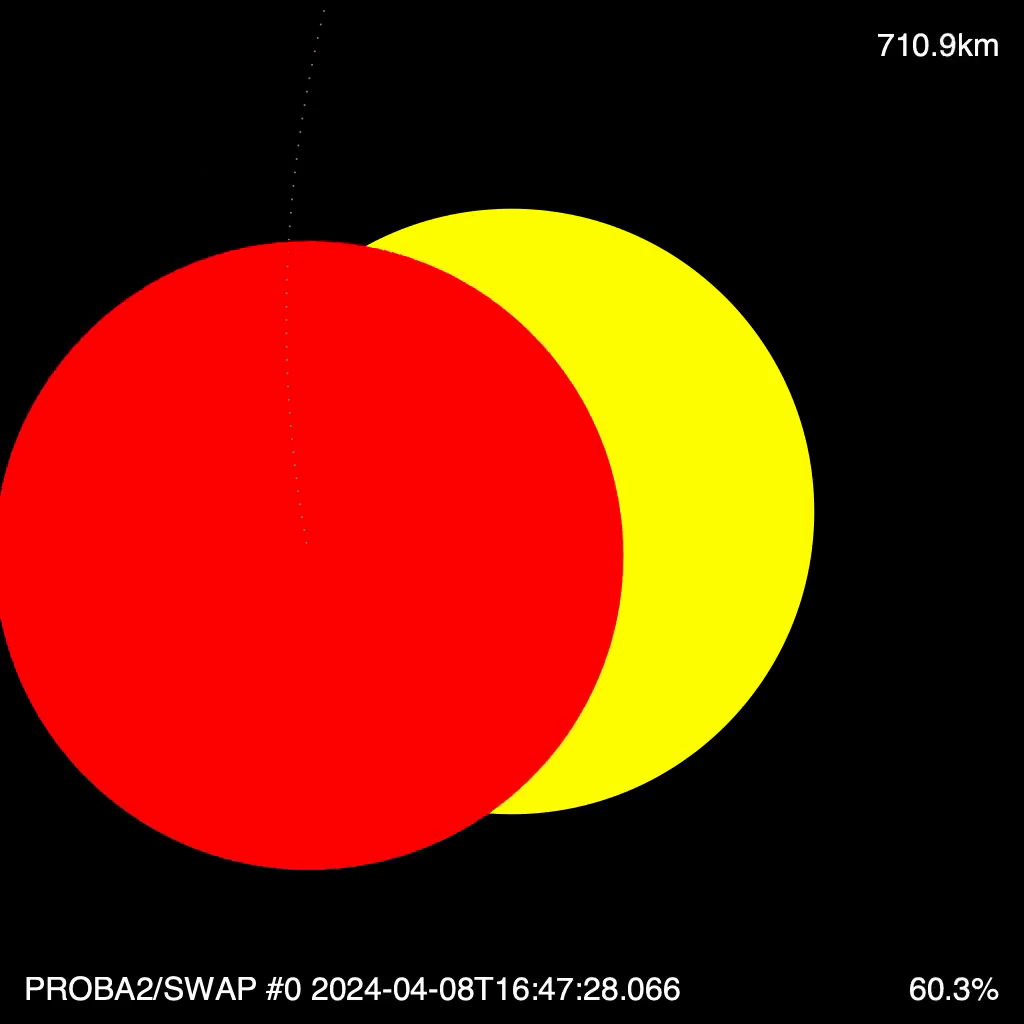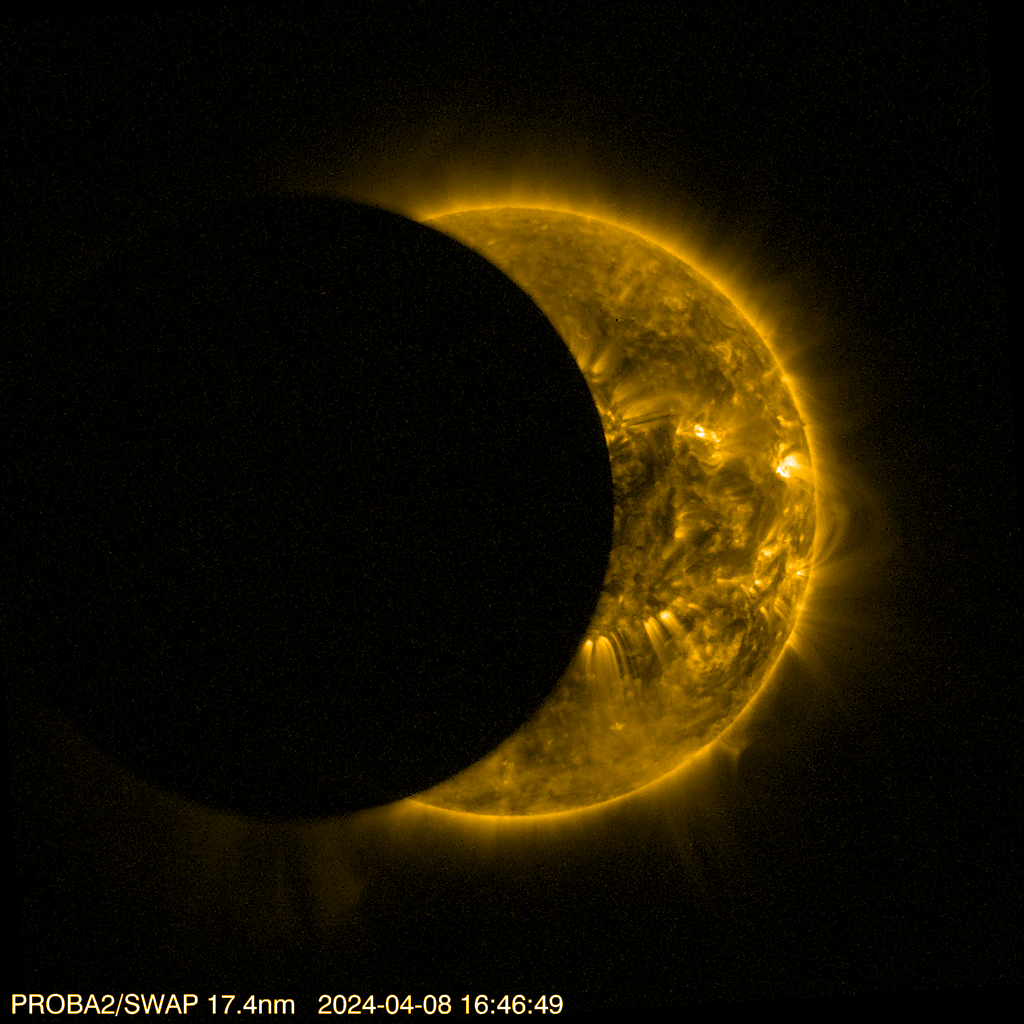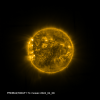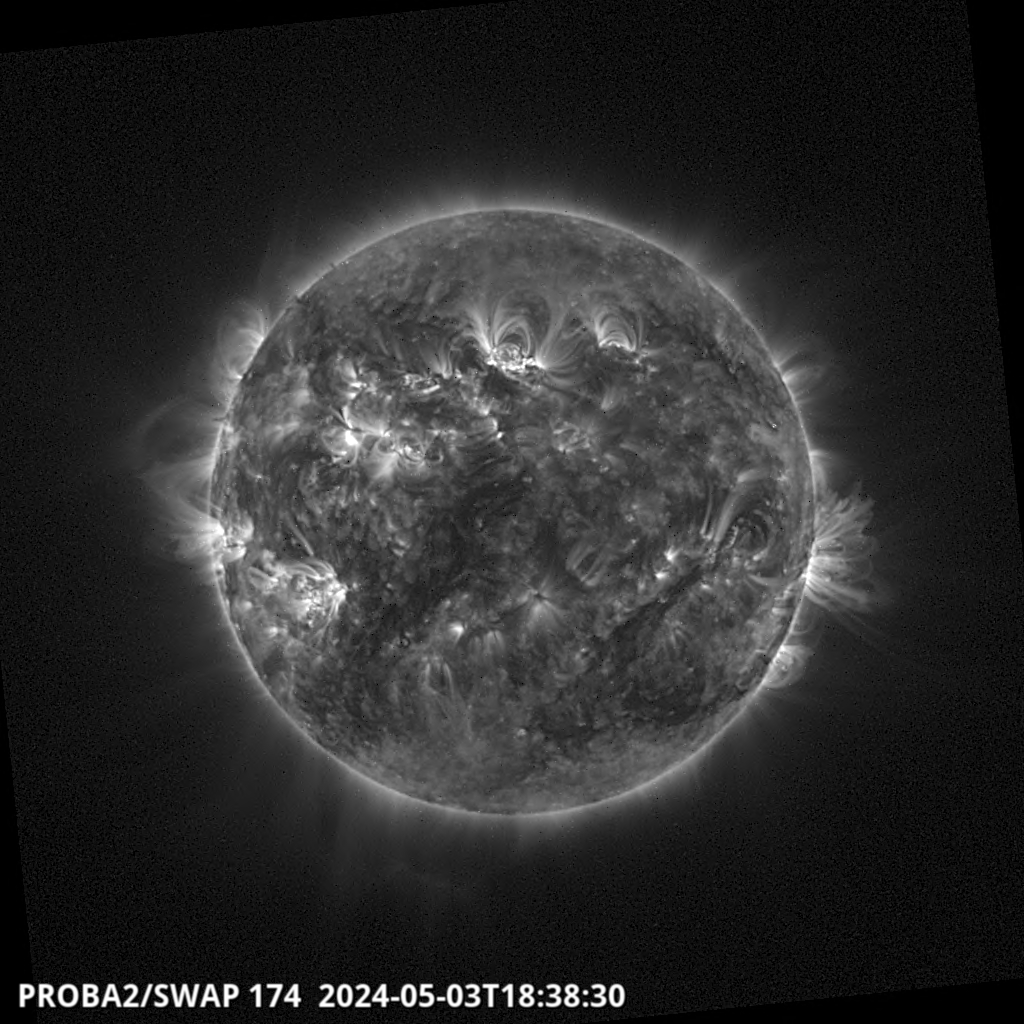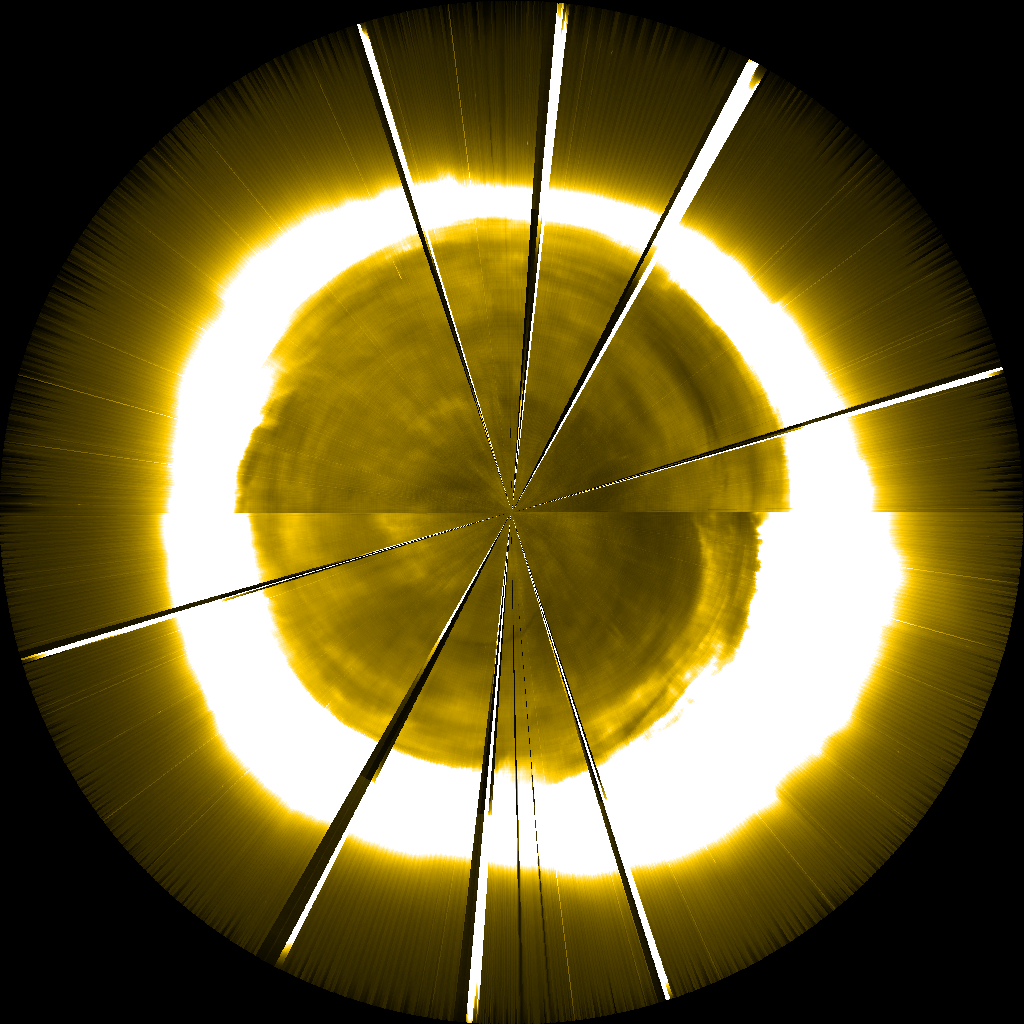Main menu
You are here
The great eclipse
Wed, 03/20/2024 - 11:05 — Elke D'Huys
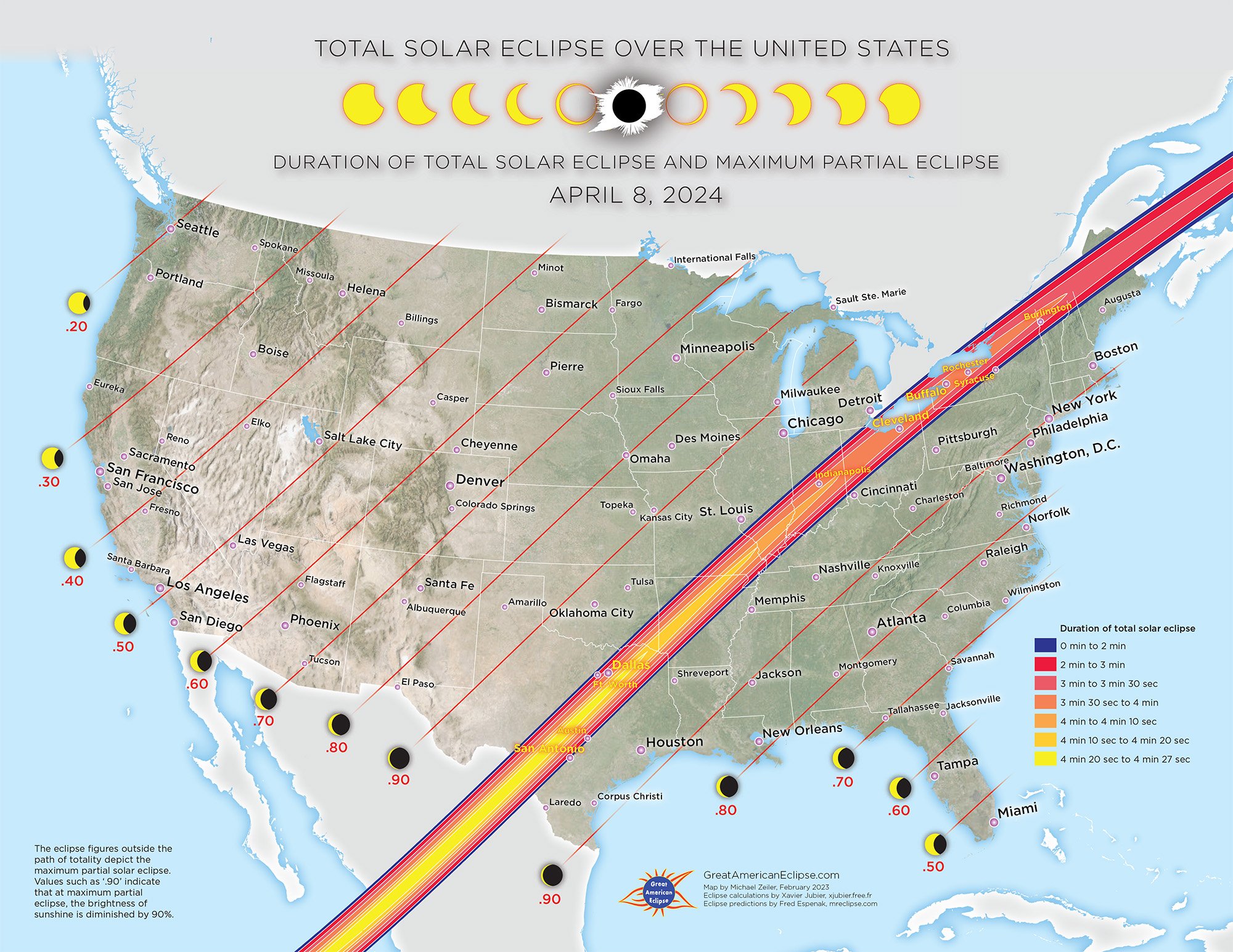
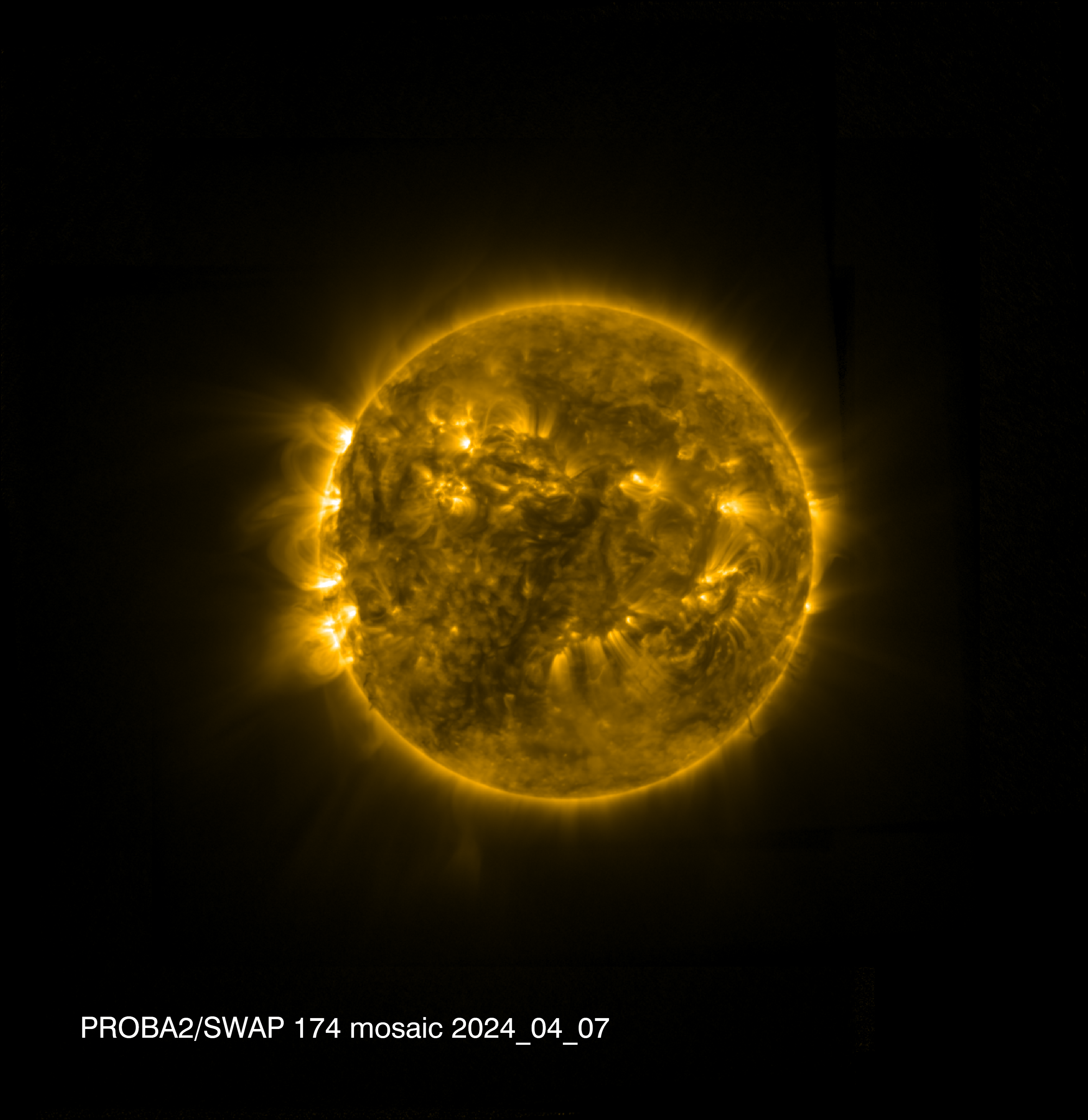
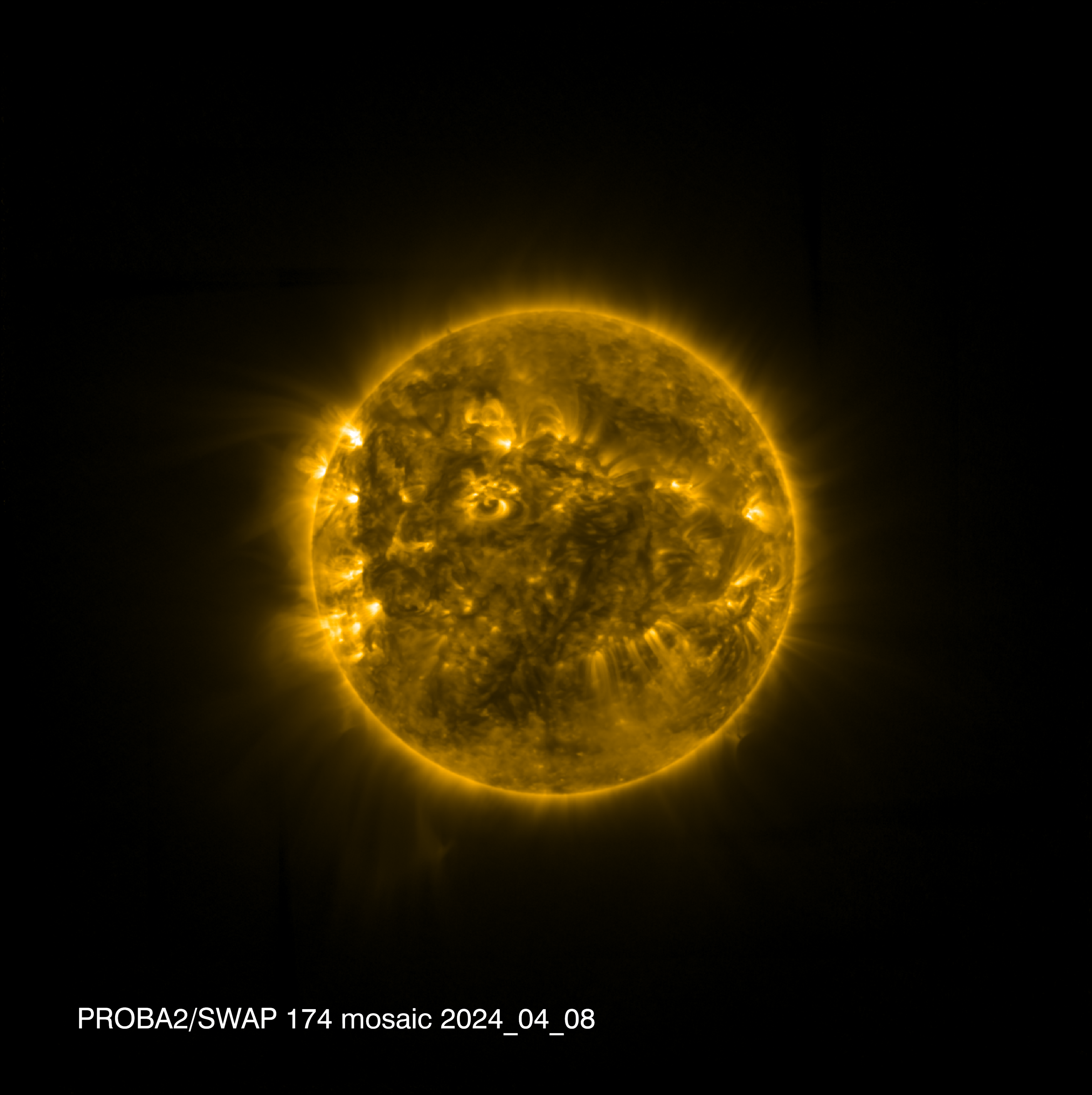
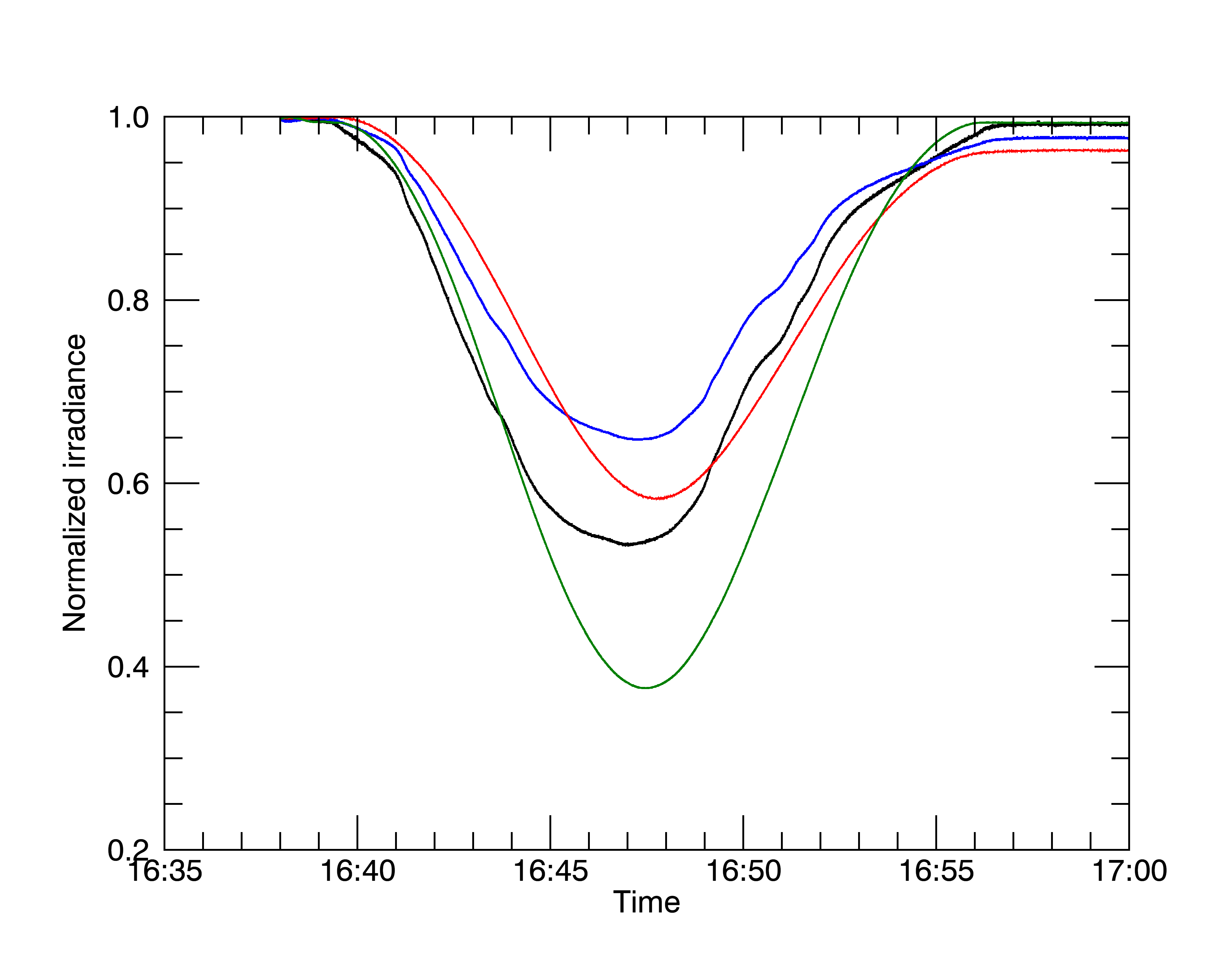

April 8, 2024. A date that has been highlighted in many calendars for months. It ws the day of the Great American Eclipse, as it is now called. A total eclipse during which the Moon’s shadow covered large parts of Mexico, the USA and Canada. In fact, weather permitting, all of Noth America witnessed at least a partial eclipse on that day, as you can see from the map below.
It is rare that the path of totality of a solar eclipse crosses so many densely-populated areas, and this unique opportunity allowed millions of people to enjoy the spectacle just by stepping out of their doors and putting on eclipse glasses. In addition, many eclipse chasers, solar scientists and other enthusiasts traveled to see this eclipse. It was -for once- quite easy to reach the zone of totality and many eclipse expeditions were planned.

This eclipse was thus observed in various ways: with the naked eye, but also with camera’s, telescopes and other instruments on ground, in planes and on satellites. The PROBA-2 satellite data contributed to a number of joint observations campaigns. For example, eclipse observations were made in preparation of the PROBA-3 mission, which is formation-flying demonstration mission that will create an artificial eclipse using two separate spacecraft flying at a distance of approximately 150 meters. The launch of PROBA-3 is coming close (currently expected in September 2024) and so this Great American Eclipse formed a prefect test case for the mission scientists. PROBA-2 supported this effort with mosaics observations taken close before the eclipse, to give the observers on ground an idea of what the extended corona would look like during the event.


At the times of the PROBA-2 eclipses, LYRA and SWAP took their usual eclipse observations. As always, due to its fast orbit, PROBA2 was able to witness the eclipse multiple times. The simulation below shows that the Moon covered part of the solar disk as seen by SWAP during 2 intervals and made one more passage in the field-of-view, without covering the disk. For LYRA there are four intervals during which the Moon passes through the instrument's field-of-view.
LYRA observations
As for all eclipses, LYRA activated one of its backup units, which acquires in parallel with the nominal unit. The instrument monitors the progressive extinction of the solar light in its channels that we observe in the ultraviolet (red and green curves) and extreme ultraviolet (black and blue curves). LYRA observations are available in the event directory.


SWAP observations
We made high cadence observations of the occultations with SWAP and produced our typical sets of calibrated PNG images (with logos and timestamp, with timestamp only, and without logos or timestamp), as well as movies of the event. All movies and images of the eclipse are collected in dedicated directories on our  website. The event directory also contains a specially selected SWAP image to promote the eclipse. This is the image with the largest part of the Sun occulted by the Moon. The mosaic images that we prepared in support of the PROBA-3 observation campaign can also be found in this directory.
website. The event directory also contains a specially selected SWAP image to promote the eclipse. This is the image with the largest part of the Sun occulted by the Moon. The mosaic images that we prepared in support of the PROBA-3 observation campaign can also be found in this directory.
Click on the simulation below to see a movie of the expected view of the eclipse for the SWAP telescope or on the actual eclipse movie on the right.
Data Use Policy
All PROBA2 images and movies used in outreach and the media should be credited to "ESA/ROB". Additional information about the terms of use for PROBA2 data is available on the PROBA2 website.
Contacting the PROBA2 Team
All requests for media comments, data assistance, or planning requests can be directed to the SWAP and LYRA teams via swap-lyra@lists.observatory.be .

